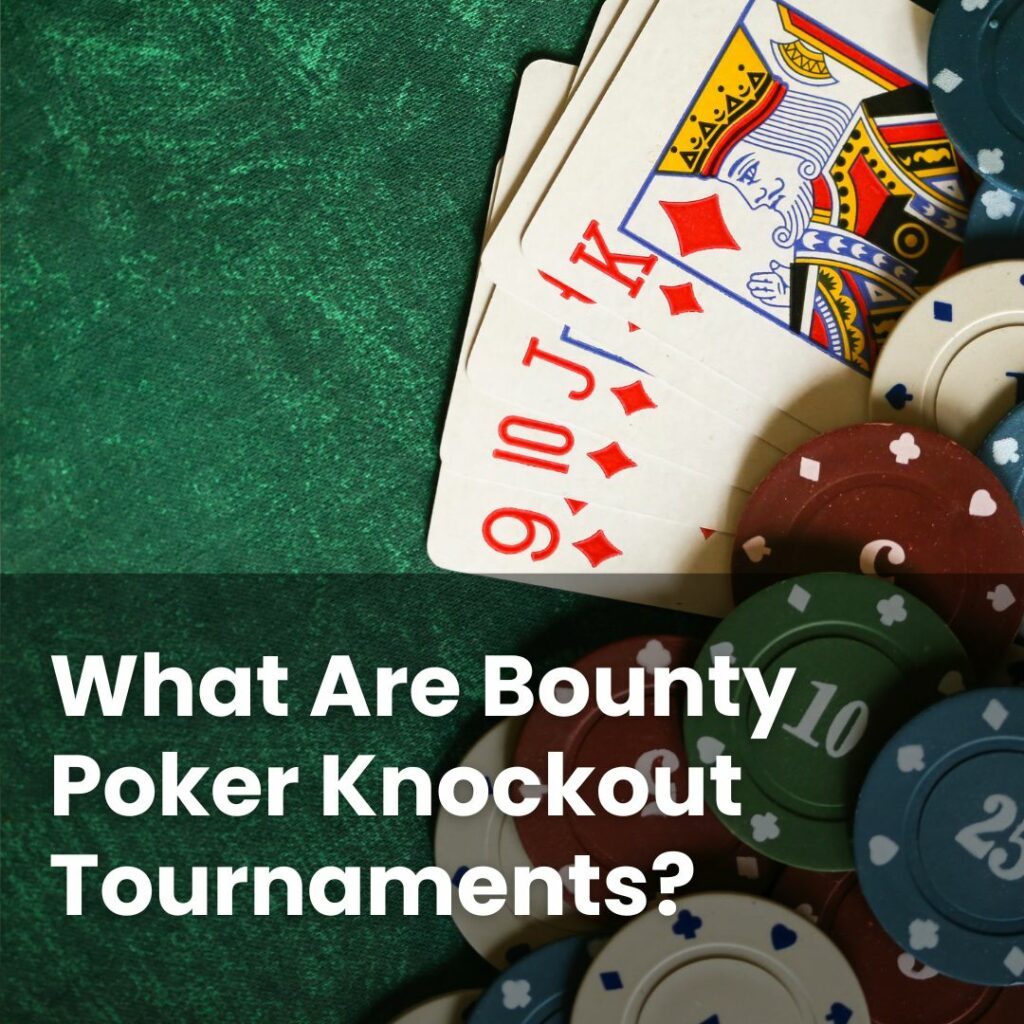Bounty Poker Knockout Tournaments (PKOs) offer a twist on standard tournament play, with potential rewards linked to more than just final positions. At first glance, they might appear like regular events, but a few subtle differences influence how decisions unfold throughout. Understanding these differences gradually can help players determine whether this type of event aligns with their approach.
This blog post explores the concept of bounty tournaments, the main formats you may encounter, how payouts work, and how newer players might approach them.
Read on to learn more.
What Is a Bounty Poker Knockout Tournament?
In these tournaments, every participant carries a cash value that can be claimed if they are eliminated. When a player is knocked out, the opponent responsible typically receives a reward.
The entry fee is often split into two components: one portion contributes to the main prize pool, while the other relates to each player’s individual value. This means there are effectively two ways to earn from the event: via the bounties collected during play and the traditional prize money based on finishing positions.
Because there is an incentive for knockouts, choices may differ from standard tournaments. Players may need to consider immediate opportunities alongside broader progress. Observing a typical event from start to finish can clarify these dynamics.
How Do Bounty Poker Tournaments Work?
These events largely follow the rules of standard multi-table tournaments, with blinds increasing over time and players leaving until a single winner emerges. The twist is that each elimination can provide a direct reward for the player responsible.
As mentioned previously, part of the entry fee contributes to the main pool and part to individual values. In some tournament types, a player’s own value can shift during the event, which may influence how opponents respond.
Every hand carries the usual strategic considerations, but some outcomes now include immediate tangible rewards. Different formats adjust how these rewards unfold, which leads to the main variations you’re likely to see if you choose to participate.
See Our Top-Rated Online Casinos
Find the best online casino bonuses, read reviews from real players & discover brand new casinos with our list of recommended sites
Understanding Regular Bounty vs Progressive Knockout Formats
There are two principal approaches to bounty events: regular bounty and progressive knockout.
In regular bounty tournaments, every player begins with a fixed value. If a player is eliminated, their full reward goes to the opponent responsible. The amount stays the same throughout the event.
Progressive knockout tournaments, or PKOs, introduce a shifting dynamic. Only a portion of a player’s value is paid immediately when they are knocked out, with the remainder added to the bounty of the eliminator. This makes players who collect several knockouts increasingly “valuable” targets later in the event.
For example, imagine a £50 starting value: in a regular bounty, a single elimination gives the full £50; in a PKO, the opponent might receive £25 immediately, while the other £25 is added to their own value for later. Both approaches offer rewards outside the main prize pool, but PKOs create evolving incentives as certain players grow in prominence. Understanding this makes it easier to see how overall earnings are calculated.
How Are Prizes and Payouts Calculated in Knockout Events?
As noted before, the entry fee is divided between the main pool and player values. The main prize pool is awarded to the top finishers according to the tournament’s structure, while the values are collected as knockouts occur.
In regular bounty events, each knockout produces a constant payout. PKOs differ: only part of the eliminated player’s value is paid immediately, with the rest increasing the eliminator’s own value. Over time, this compounding effect can make later-stage knockouts more rewarding.
Total returns for a participant are the sum of:
- Bounties earned during the event, paid as eliminations happen
- Any final prize based on finishing position
For example, a £40 entry split evenly might allow a player to finish outside the top positions yet still collect multiple bounty payments. Alternatively, a player advancing deep into the event could combine any final prize with the bounties collected.
Is Bounty Poker Suitable for New Players?
These tournaments may appeal to newer players because there are rewards for individual eliminations as well as reaching the end stages. The presence of bounties means some decisions become more nuanced, as players might consider the potential gains alongside continuing in the event.
Beginners might find it helpful to explore smaller entry fees while observing how value shifts during play, particularly in PKOs where certain players become more prominent targets as the tournament progresses.
As with any form of poker, it is important to play within personal limits and make use of available gambling tools. If participation becomes uncomfortable, taking a break and accessing support is recommended. Approached thoughtfully, bounty events provide an additional element without altering the fundamental game.



